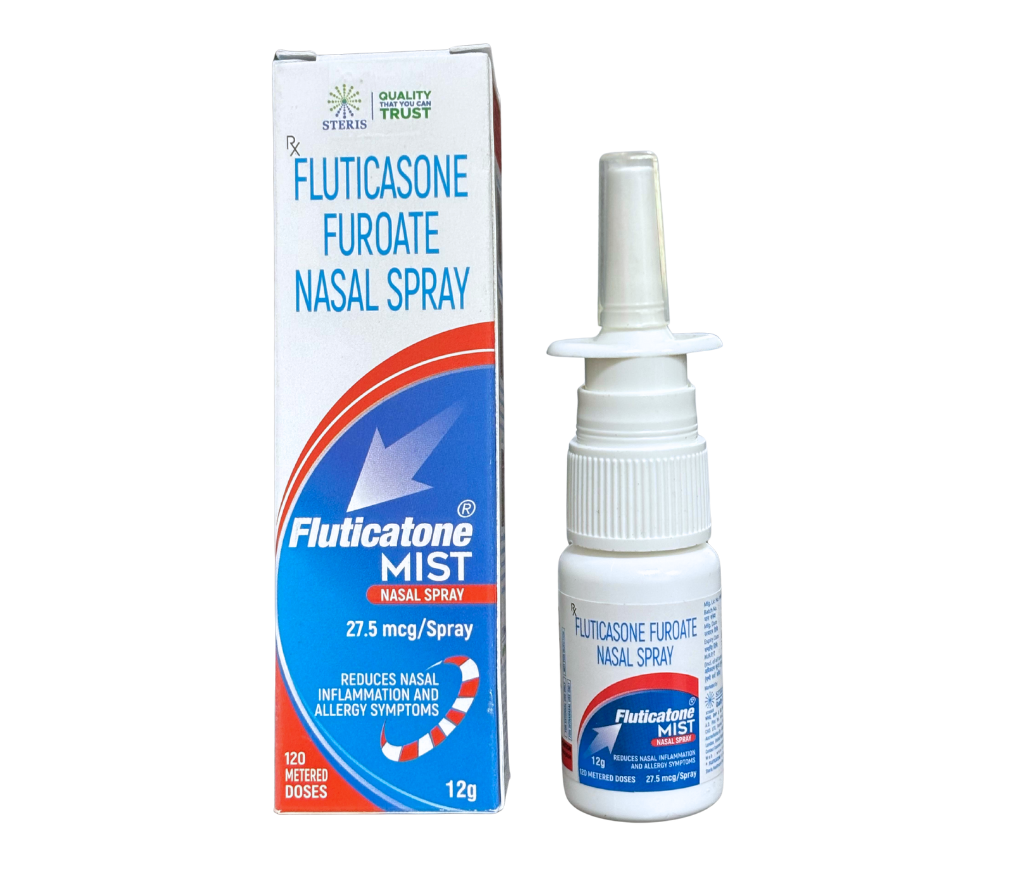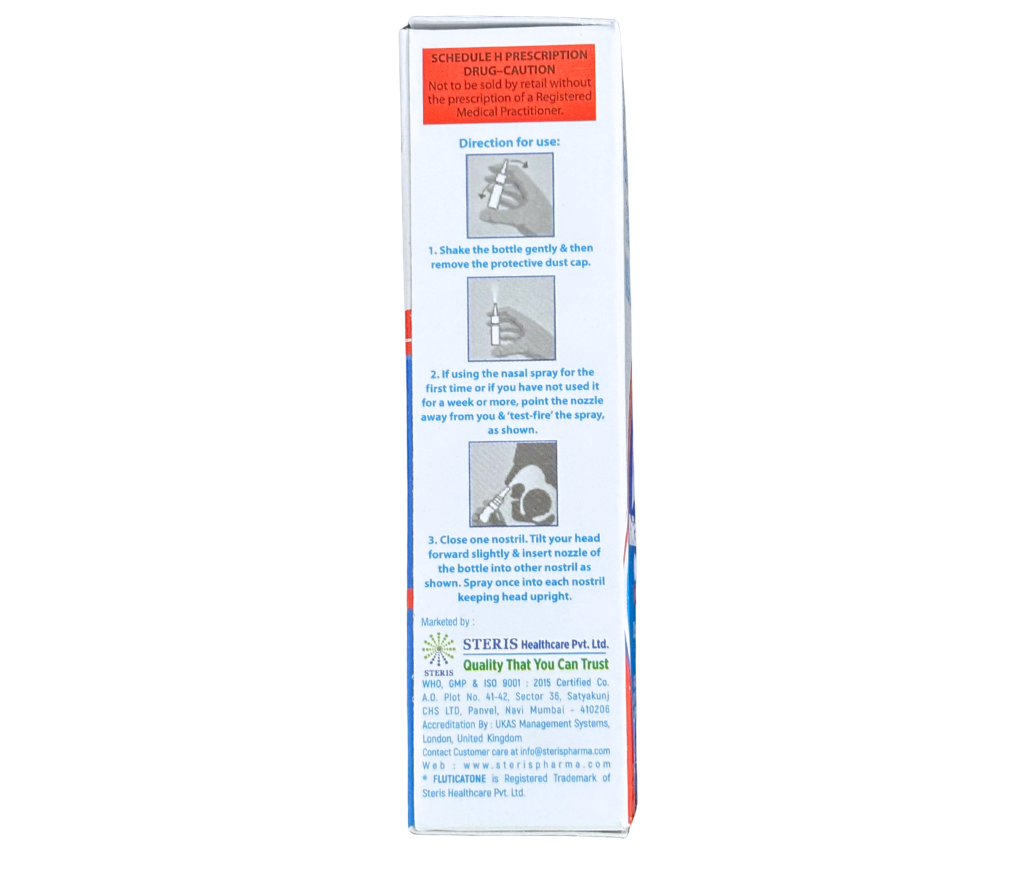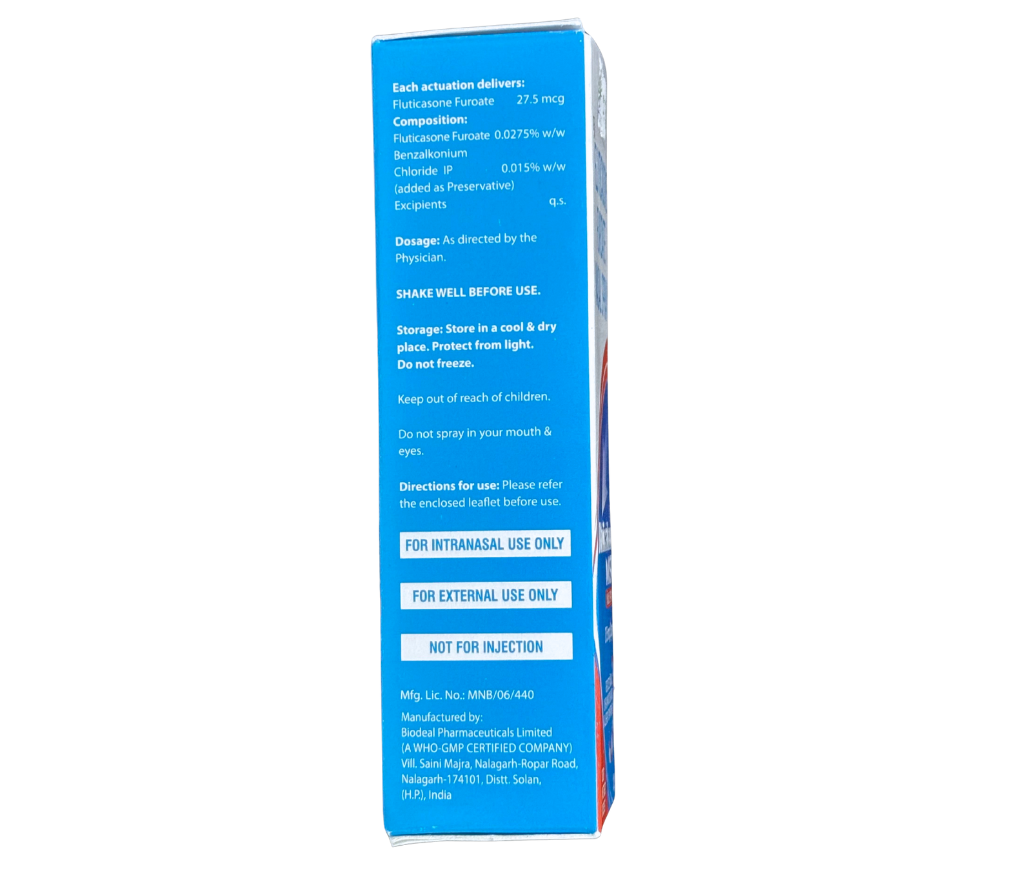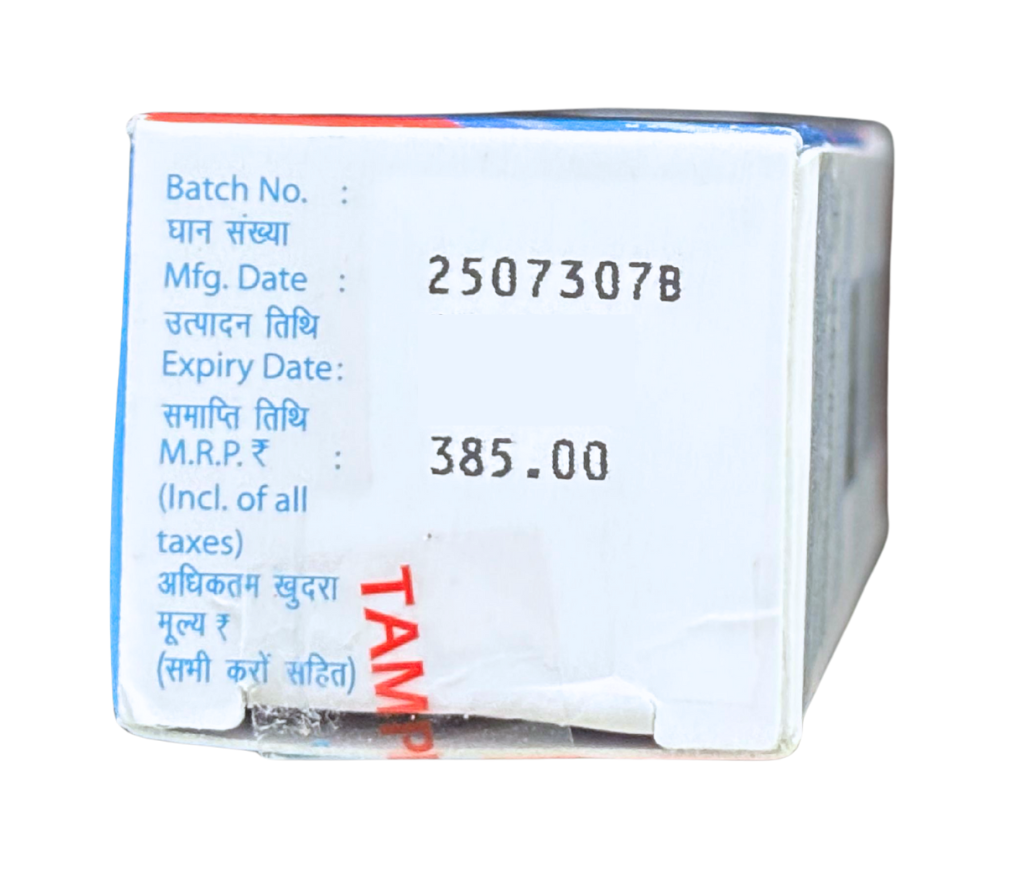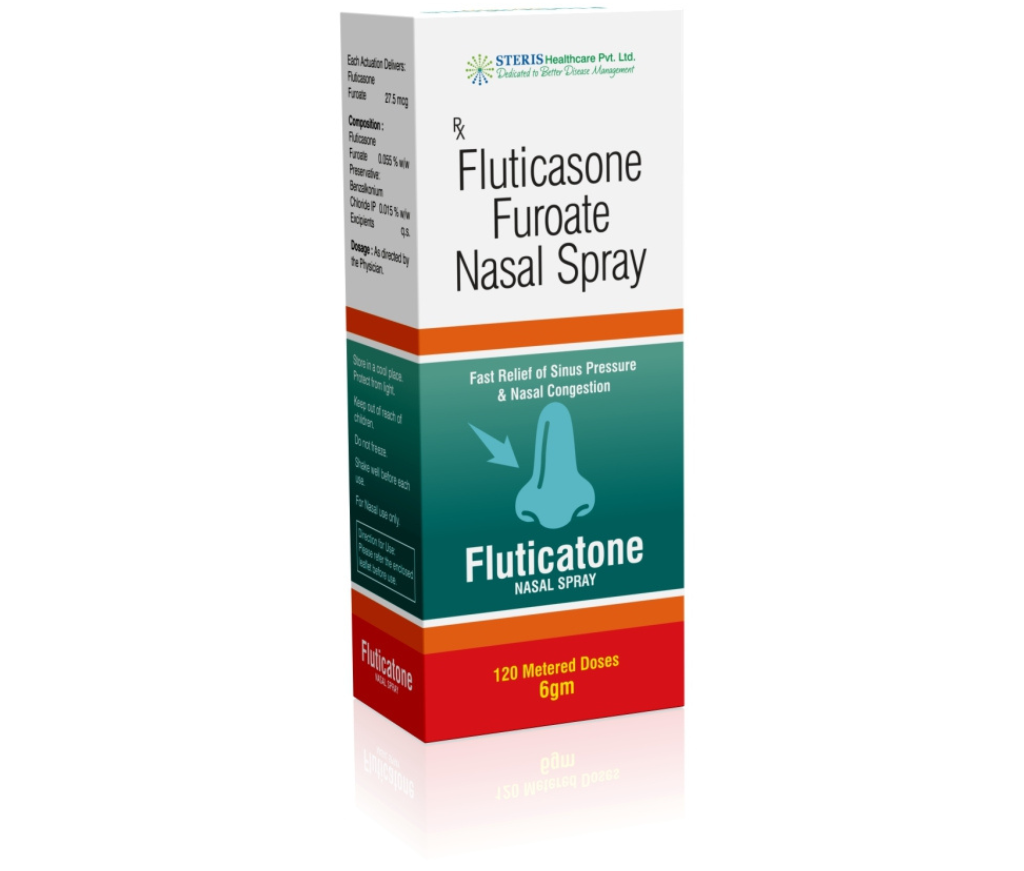FLUTICATONE MIST NASAL SPRAY
Item requires a valid prescription
Manufactured By Steris Healthcare Pvt. Ltd.
Composition Fluticasone Furoate Nasal Spray
Rs 269.90
MRP Rs 385.00
(30% OFF)
Includes all taxes
Package SIZE
( 27.5 mcg / 12 Gram )
100% Authentic
Products
Free
Shipping*
Products
Return Policy
Description:
Key Ingredients
The principal active ingredient is fluticasone (a corticosteroid) in a nasal spray formulation (mist).
In some formulations, “Fluticatone” is part of combination sprays (e.g. Fluticatone AZ, combining fluticasone + azelastine)
Another variant “Fluticatone Oxy” includes fluticasone furoate + oxymetazoline + preservative (benzalkonium chloride)
So the “key ingredient” is fluticasone (usually in a form like fluticasone propionate or fluticasone furoate) with possibly other agents depending on the product variant.
Key Benefits / Indications
Fluticasone (nasal spray) is used for:
-
Relief of allergic rhinitis symptoms: sneezing, nasal itchiness, runny nose, nasal congestion
-
Relief of nonallergic rhinitis symptoms (in some cases)
-
Often used for both seasonal and perennial (year-round) allergic rhinitis
-
Reducing nasal inflammation, swelling, and irritation in the nasal mucosa
If the spray is a combination (e.g. with azelastine), benefits may include additional antihistamine effects (blocking histamine) for faster relief of sneezing/itching
If a decongestant (oxymetazoline) is included, it may also provide more rapid relief of congestion
How Does It Work? (Mechanism of Action)
-
Fluticasone (corticosteroid action):
As a glucocorticoid, it acts locally in the nasal mucosa to reduce inflammation. It inhibits inflammatory mediators (e.g. cytokines, prostaglandins, leukotrienes) and suppresses infiltration of inflammatory cells (eosinophils, mast cells, etc.). This reduces swelling, mucus production, and irritation.Additional agents (if present): -
-
Azelastine (antihistamine): blocks histamine receptors in nasal mucosa, reducing sneezing, itching, runny nose.
-
Oxymetazoline (a decongestant): constricts small blood vessels in the nasal passages, thereby reducing swelling and congestion.Benzalkonium chloride (preservative): used to prevent microbial growth in the formulation.
-
In sum: the spray delivers active ingredient(s) directly to nose passages, exerting local anti-inflammatory, antihistamine, and/or decongestant action, rather than systemic effect.
Directions for Use (Typical Use)
These are general guidelines — always follow the product leaflet or your doctor’s instructions.
-
Prime the pump (if first time, or if unused for some days): spray into the air until a fine mist appears.
-
Gently blow your nose to clear nostrils.
-
Tilt your head slightly forward. Close one nostril by pressing it gently with finger. Insert the spray tip into the other nostril, pointing it slightly away from the septum (the center).
-
While breathing in gently through the nose, press the pump to release the spray.
-
Repeat in the other nostril, if required.
-
Wipe the nozzle clean and replace the cap.
-
Use at regular intervals (often once or twice daily) as prescribed.
-
Do not tilt your head backward while spraying, and avoid directing the spray toward the eyes or throat.
If it’s a combination product (e.g. Fluticatone AZ), the dosing schedule may differ; follow specific instructions.
Also, if the nozzle clogs, soak in warm water and spray while submerged to clear the blockage (don’t use pins) — a standard tip for nasal sprays.
Side Effects
Common side effects (usually mild, local) include:
-
Nasal irritation: burning, stinging, or discomfort in nose
-
Dryness in the nose or throat
-
Nosebleeds (epistaxis)
-
Sneezing after use
-
Headache
-
Unpleasant taste or nasal congestion rebound in some cases
Less common / rare / serious side effects (especially with prolonged or high‐dose use):
-
Thinning of nasal tissues, ulceration in nasal passages
-
Increased risk of infections (local)
-
Possible systemic corticosteroid effects (if absorption is significant): adrenal suppression, growth retardation in children, glaucoma, cataracts, bone mineral density effects
-
Allergic reactions (rash, swelling) in rare cases
If combination decongestant (oxymetazoline) used:
-
Rebound congestion (rhinitis medicamentosa) if used for too long.
-
Potential increase in blood pressure in sensitive individuals
If antihistamine (azelastine) included:
-
Bitter taste, sedation, drowsiness, nasal burning, dry mouth
If you notice serious symptoms (vision changes, persistent nosebleeds, severe pain, signs of infection), stop and seek medical advice.
Safety Information & Precautions
-
Use only as directed by a physician.
-
Inform your doctor if you have recent nasal surgery, nasal ulcers, trauma, or infections.
-
In case of combination sprays (with decongestants), avoid prolonged use of decongestant component to reduce risk of rebound congestion.
-
Be cautious if you have glaucoma, cataracts, osteoporosis, adrenal insufficiency, or immune suppression.
-
Use with caution in children; long-term use may impact growth (if systemic absorption).
-
In pregnancy or breastfeeding, use only if clearly needed and under medical supervision.
-
Avoid spraying into eyes, throat, or mouth.
-
Keep the nozzle clean; do not let the tip touch any surfaces.
-
Do not share the spray with others (risk of infection).
-
Store as per the product instructions (often below 30 °C, protected from light).
-
If symptoms worsen or persist beyond expected duration, consult a physician.
If You Need More Information Click Here

